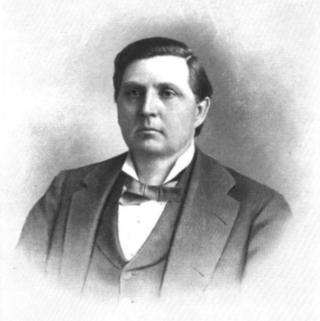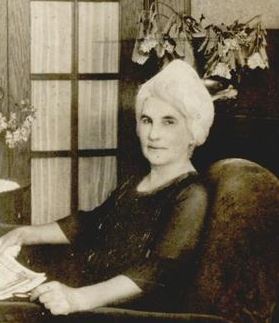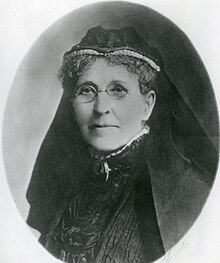
LeFlore County is a county along the eastern border of the U.S state of Oklahoma. As of the 2020 census, the population was 48,129. Its county seat is Poteau. The county is part of the Fort Smith metropolitan area and the name honors a Choctaw family named LeFlore. The United States District Court for the Eastern District of Oklahoma is the federal district court with jurisdiction in LeFlore County.

Johnston County is a county located in the U.S. state of Oklahoma. As of the 2020 census, the population was 10,272. Its county seat is Tishomingo. It was established at statehood on November 16, 1907, and named for Douglas H. Johnston, a governor of the Chickasaw Nation.

Atoka County is a county located in the U.S. state of Oklahoma. As of the 2020 census, the population was 14,143. Its county seat is Atoka. The county was formed before statehood from Choctaw Lands, and its name honors a Choctaw Chief named Atoka. The county is part of Choctaw Nation reservation lands.

The Chickasaw are an Indigenous people of the Southeastern Woodlands, United States. Their traditional territory was in northern Mississippi, northwestern and northern Alabama, western Tennessee and southwestern Kentucky. Their language is classified as a member of the Muskogean language family. In the present day, they are organized as the federally recognized Chickasaw Nation.

Atoka is a city in and the county seat of Atoka County, Oklahoma, United States. The population was 3,195 as of the 2020 Census, a 2.4% increase over the 3,107 reported at the 2010 census, which was itself an increase of 4.0 percent from the figure of 2,988 in 2000.
Boggy Depot is a ghost town and Oklahoma State Park that was formerly a significant city in the Indian Territory. It grew as a vibrant and thriving town in present-day Atoka County, Oklahoma, United States, and became a major trading center on the Texas Road and the Butterfield Overland Mail route between Missouri and San Francisco. After the Civil War, when the MKT Railroad came through the area, it bypassed Boggy Depot and the town began a steady decline. It was soon replaced by Atoka as the chief city in the area. By the early 20th century, all that remained of the community was a sort of ghost town.

The Battle of Honey Springs, also known as the Affair at Elk Creek, on July 17, 1863, was an American Civil War engagement and an important victory for Union forces in their efforts to gain control of the Indian Territory. It was the largest confrontation between Union and Confederate forces in the area that would eventually become Oklahoma. The engagement was also unique in the fact that white soldiers were the minority in both fighting forces. Native Americans made up a significant portion of each of the opposing armies and the Union force contained African-American units.
Samuel Benton Callahan was an influential, Muscogee politician, born in Mobile, Alabama, to a white father, James Callahan, and Amanda Doyle, a mixed-blood Creek woman. He is listed as 1/8th Creek by Blood on the Dawes Rolls. One source says that James was an Irishman who had previously been an architect or a shipbuilder from Pennsylvania, while Amanda was one-fourth Muscogee. His father died while he was young; he and his mother were required to emigrate to Indian Territory in 1836. His mother married Dr. Owen Davis of Sulphur Springs, Texas, where they raised Samuel.
The Battle of Middle Boggy Depot, also known as the Battle of Middle Boggy River or simply Battle of Middle Boggy, took place on February 13, 1864 in Choctaw Indian Territory, 4 miles (6.4 km) south of what is now Allen in Pontotoc County, Oklahoma. Advancing down the Dragoon Trail toward Fort Washita, Union Colonel William A. Phillips sent out an advance of approximately 350 men from the 14th Kansas Cavalry and two howitzers to attack a Confederate outpost guarding the Trail's crossing of Middle Boggy River. The Confederate force was led by Captain Jonathan Nail and composed of one company of the First Choctaw and Chickasaw Cavalry, a detachment of the 20th Texas Cavalry and part of the Seminole Battalion of Mounted Rifles. The outpost was about 12 miles (19 km) from Muddy Boggy Depot, which was held by the Confederates. The Encyclopedia of Oklahoma History and Culture says that the battlefield was 15 miles northeast of the depot, whereas the battlefield marker says the distance was 12 miles. The Confederate force at the outpost, consisting of 90 poorly armed men, were caught off guard when Willetts attacked them. Outnumbered and outgunned, the Confederates held off the Union cavalry attack for approximately 30 minutes before retreating to the rest of Lt. Col. John Jumper's Seminole Battalion, who were not at the main skirmish. The Confederates retreated 45 miles (72 km) southwest down the Dragoon Trail. The Union advance continued south toward Ft. Washita the next day, but when the expected reinforcements did not arrive Philips' Expedition into Indian Territory stalled on February 15, near old Stonewall.

Allen Wright was Principal Chief of the Choctaw Republic from late 1866 to 1870. He had been ordained as a Presbyterian minister in 1852 after graduating from Union Theological Seminary in New York City. He was very active in the Choctaw government, holding several elected positions. He has been credited with the name Oklahoma for the land that would become the state.
Wheelock Academy was the model academy for the Five Civilized Tribes' academies. It was started as a missionary school for Choctaw girls, and is still owned by the Choctaw nation. The school closed in 1955 and the only remaining Choctaw school, Jones Academy, became coeducational. The site is located 3 miles (4.8 km) east of Millerton in McCurtain County, Oklahoma. It is administered by the Bureau of Indian Affairs.

Douglas Hancock Cooper Johnston, also known as "Douglas Henry Johnston", was a tribal leader who served as the last elected governor of the Chickasaw Nation from 1898 to 1902. He was re-elected in 1904 and, after the Dawes Act changed how tribal lands were allocated and regulated in Indian Territory to allow statehood in 1907, he was appointed by President Theodore Roosevelt in 1906 as governor of the tribe under federal authority. He served until his death in office in 1939.

During the American Civil War, most of what is now the U.S. state of Oklahoma was designated as the Indian Territory. It served as an unorganized region that had been set aside specifically for Native American tribes and was occupied mostly by tribes which had been removed from their ancestral lands in the Southeastern United States following the Indian Removal Act of 1830. As part of the Trans-Mississippi Theater, the Indian Territory was the scene of numerous skirmishes and seven officially recognized battles involving both Native American units allied with the Confederate States of America and Native Americans loyal to the United States government, as well as other Union and Confederate troops.
William Clyde Thompson was a Texas Choctaw-Chickasaw leader of the Mount Tabor Indian Community in Texas and an officer of the Confederate States of America during the Civil War. After moving north to the Chickasaw Nation in 1889, he led an effort to gain enrollment of his family and other Texas Choctaws as Citizens by blood of the Choctaw Nation in Indian Territory. This was at the time of enrollment for the Final Roll of the Five Civilized Tribes, also known as the Dawes Rolls, which established citizenship in order for the nations to be broken up for white settlement and to allot communal tribal lands to individual Indians. The Choctaw Advisory Board opposed inclusion of the Texas Choctaw as well as the Jena Choctaws in Louisiana, as they had both lived primarily outside of the Choctaw Nation. Thompson's case eventually went to the United States Supreme Court to be decided where he and about 70 other Texas Choctaws who had relocated to Indian Territory ultimately had their status restored as Citizens by Blood in the Choctaw Nation.
The Battle of Perryville took place during the American Civil War on August 23, 1863, in what is now Pittsburg County, Oklahoma.
Muriel Hazel Wright was an American teacher, historian and writer on the Choctaw Nation. A native of Indian Territory, she was the daughter of mixed-blood Choctaw physician Eliphalet Wright and the granddaughter of the Choctaw chief Allen Wright. She wrote several books about Oklahoma and was unofficially called "Historian of Oklahoma". She also was very active in the Oklahoma Historical Society and served as editor of the Chronicles of Oklahoma from 1955 to 1971.

Sophia Alice Callahan was a novelist and teacher of Muscogee heritage. Her novel, Wynema, a Child of the Forest (1891) is thought "to be the first novel written by a Native American woman." Shocked about the Massacre at Wounded Knee at the Pine Ridge Indian Reservation, which took place about six months before she published her book, Callahan added an account of this and the 1890 Ghost Dance of the Lakota to her book in the first fictional treatment of these subjects. This may have been "the first novel written in Oklahoma," which was at the time Indian Territory. Callahan wrote in a romantic novel style but she also clearly intended what has been called a "reform novel," identifying many wrongs suffered by Native Americans in United States society. After being discovered in the late 20th century, the novel was reprinted in 1997. It has been the subject of scholarly studies.

Estelle Chisholm Ward was a Chickasaw teacher, journalist, and magazine publisher from Oklahoma. She was active in politics both civic and tribal and was elected as county treasurer of Johnston County, Oklahoma. Ward was the first woman to represent the Chickasaw Nation as a delegate to Washington, DC.
John Edwards (1828-1903) was an American missionary who was sent to the homeland of the Choctaw Indians in the mid 19th century. Born in Bath, New York on January 21, 1828, he graduated from Princeton Seminary in 1848, and sent to the Choctaw Nation, in 1851. He soon succeeded Alfred Wright as superintendent of the Wheelock Mission, but was forced to flee Indian Territory when a band of Confederate-supporting Choctaws and Texas troops threatened to hang him because he refused to support their side in 1861. Although he returned to Wheelock and attempted to help rebuild the mission complex, his health was too poor to let him remain. Instead, he died in Oakland, California on February 18, 1903. He was most noted for his services to Wheelock Mission

Anna Ludlow was a Choctaw teacher and philanthropist.












